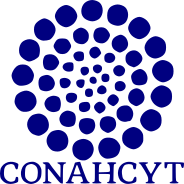ESTUDIO CUALITATIVO Y CUANTITATIVO DE LA FLORA MEDICINAL DEL MUNICIPIO DE COPÁNDARO DE GALEANA, MICHOACÁN, MÉXICO
Abstract
The medicinal plants of Copandaro de
Galeana in the state of Michoacan, Mexico,
were studied, and uses were recorded for
103 taxa. The dominant plant families were
Compositae (19 spp.), Labiatae (10 spp.),
Solanaceae (6 spp.) and Leguminosae (5
spp.), and the most represented genera were
Salvia (Labiatae) y Tagetes (Compositae).
Twenty-two species of medicinal flora were
22
Núm. 22:21-50 Noviembre 2006
registered for the state for the first time. To
evaluate their relative use, the Friedman
quantitative methodology was used to determine the rank of priority (ROP) and the
fidelity value (FL) of these plants. The
relative popularity (RPL) was determined by
designating the plants as «popular» or «not
popular» and adjusting the FL values. The
most frequently used species (ROP = 100)
were: Tecoma stans (L.) Juss., Oenothera
rosea L´Her. ex Ait., O. purpusii Munz,
Bougainvillea glabra Choisy, Lippia
triphylla (L´Her.) Kuntze and Lobelia
laxiflora HBK. This information was used
to construct a database and prepare an
illustrated manual, in which the uses and
common names of these species are given.
A local herbarium for general use was
established with our collections.
Downloads
Published
Issue
Section
License

Polibotánica by Departamento de Botánica de la Escuela Nacional de Ciencias Biológicas del Instituto Politécnico Nacional se distribuye bajo una Licencia Creative Commons Atribución-NoComercial-CompartirIgual 4.0 Internacional.




















